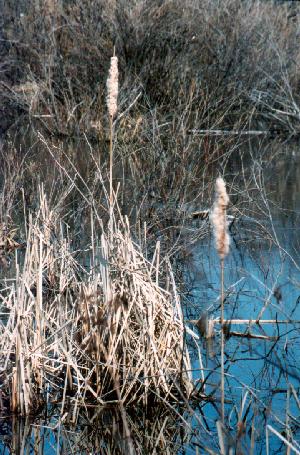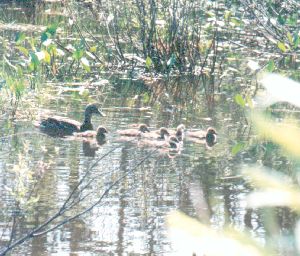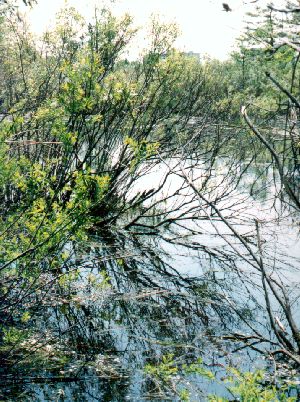Nature in the City
When I was young, I saw a movie called "Nature's Half Acre". It was a full length Hollywood feature on the photogenic life of a tiny patch of unmown grass. I've always remembered that half acre, for it taught me two valuable lessons. Nature can live right next to us, it can be our neighbour and our friend. It doesn't have to be in a glamorous location far away. And, nature can be small. It doesn't have to be big, or big-budget.
But, although currently some 20% of Ottawa land area (the pre-2001 boundary) is open or vacant, barely 3% is in anything like a natural state. We have so far largely failed to integrate natural communities into our human communities in Canada.
How can we, in practise not just in theory, design healthy natural communities into our human ones so that they work to our benefit? I have a few suggestions:
- Ecosystems are sufficiently complex that it's usually easier to keep a healthy one than to build a new one. So, it's best to identify existing natural areas at an early stage in planning, so that they form a part of all aspects of a new human community if they can.
- However, natural ecosystems can be made! They are not 'lost forever' with development. With expert care, a biodiverse meadow can be established on reasonable soil in three years, a healthy marshy pond within five - I've done both. Even a solid forest canopy can be established in twenty with the right trees.
- They should be small, so that there can be many of them, one of some type or another within each neighbourhood.
- They must enhance the quality of human life of the immediate neighbourhood, to sustain community stewardship.
- They must be managed to co-exist with people, not as a wilderness, yet retain their ecological health, so that they become part of every day community life.
There is a fashion among planners these days for what are called 'corridors' for natural life. Their theory is that natural life will move throughout an area only along natural strips, that urban areas are barriers to nature. It is a theory that, to the best of my knowledge, has not been verified by real life experiment, except for large mammals at scales far larger than the 20 meter-wide strips in urban plans, and for a small number of habitat-specialist species such as red-backed voles. And, it is contrary to my own observations. Birds and almost all insects fly. Most plant seeds are very effectively blown about, almost all others are spread by birds. Few small mammals, amphibians and the like find a kilometer of urbanity a barrier for long. The same area as is taken up by these strips, if scattered in varied hectare-sized chunks throughout an urban area, can better protect urban biodiversity.
On the edge of the Aviation Parkway, in the neighbourhood of Carson's Grove where I used to live, there was a small marsh. Only a hectare in size, its value was not acknowledged by its owners, the federal government. But, grey tree frogs knew how special it was. Hundreds gathered there each spring to breed, the largest concentration of them in the north-eastern quarter of the City. The marsh bottom was home to mosquito-eating dragonfly nymphs by the thousands, puddle ducks used it spring through fall, the meadow at its edge was home to dozens of kinds of butterflies.... To me, it was a perfect example of the value that urban wildlife places can bring to us all. Small - neighbourhood size. Inexpensive - it looked after itself. Educational - it was full of fascinating life, changing through the seasons. And, it was beautiful to its residents who share our world with us, and to me.
The federal government didn't care - they sold most of it off for a building project. The province didn't care either - they overruled the City of Ottawa's attempt to protect it as a natural area. The areas where the tree frogs lived are now buildings and streets. The marsh, its source of water replaced by sewer-drained basements, is gone except for a few lingering cattails, and puddles in spring.
It's up to us and our communities to fight for the values we cherish in our neighbourhoods. Adopt a park, a piece of river shore, or a natural area, and tell your councillors. Support natural spaces, not just mowed grass areas, at your city planning committees. But, most of all, enjoy the natural areas around you, so that they remain special to all their residents. That way, you may get to keep yours.

the Carson's Grove marsh in early spring

a duck family, Carson's Grove marsh

tree frog heaven as it was, Carson's Grove marsh